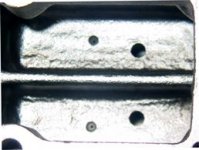mikeamondo
Jedi Hopeful
Offline
So... I feel I'm being initiated into the Bugeye club quickly! Not on the road yet and brakes have an issue... no worries! I'm ready to start turning wrenches on this little guy!
So when brake fluid pours out of the bottom of the rear wheel drum.... is that most likely a failed cylinder? I haven't pulled the wheel yet. Seller had a box of unused wheel cylinders so maybe that replacement was planned and never done. (and "pours" is pretty accurate... looked like the bleeder valve stream)
If so.... how hard is the job? Any specific advice prior to taking it apart?
Thanks!
Mike
Oh.... and if the reservoir drained before I discovered this.... should the whole system need bled or just that wheel?
So when brake fluid pours out of the bottom of the rear wheel drum.... is that most likely a failed cylinder? I haven't pulled the wheel yet. Seller had a box of unused wheel cylinders so maybe that replacement was planned and never done. (and "pours" is pretty accurate... looked like the bleeder valve stream)
If so.... how hard is the job? Any specific advice prior to taking it apart?
Thanks!
Mike
Oh.... and if the reservoir drained before I discovered this.... should the whole system need bled or just that wheel?

 Hi Guest!
Hi Guest!

 smilie in place of the real @
smilie in place of the real @
 Pretty Please - add it to our Events forum(s) and add to the calendar! >>
Pretty Please - add it to our Events forum(s) and add to the calendar! >> 

